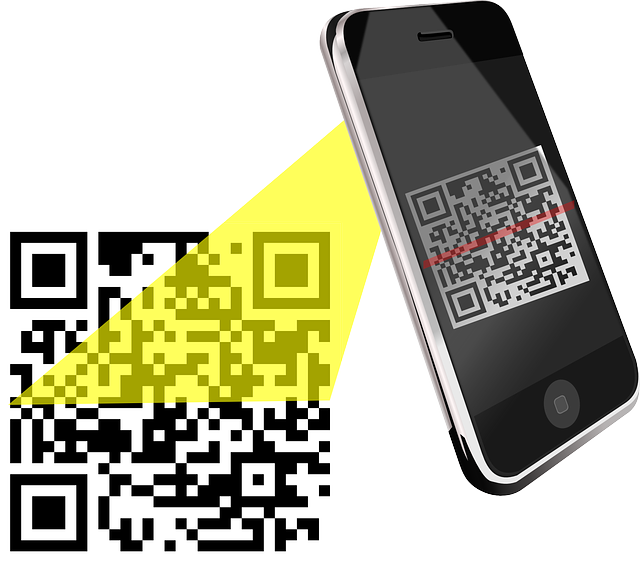The Application of QR Codes and Barcodes in the Internet of Things Era
The Internet of Things (IoT) is the international term for "sensor networks". The concept of Internet of Things was put forward in 1999. It refers to connecting various devices such as radio frequency identification devices, infrared sensors, global positioning systems, laser scanners and the Internet to realize intelligent identification and management. Specifically, sensors are embedded and equipped in power grids, railways, bridges, tunnels, highways, buildings, water supply systems, dams, oil and gas pipelines and other objects, and then the Internet of Things is integrated with the existing Internet to achieve the integration of human society and physical systems. How far is the Internet of Things from us? What new opportunities will the Internet of Things bring to the printing industry? This article will provide a preliminary exploration of the above-mentioned issues.

The era of the Internet of Things has arrived
The Internet of Things technology, as one of the important foundational technologies in the field of electronic information technology, has rapidly flourished globally with the rapid development of economic globalization and information technology. The sustained high-speed growth of China's economy and the widespread application of electronic information technology have created unprecedented market space for the widespread application of IoT technology in various fields, industries, and regions of the national economy, promoting the continuous expansion of industrial scale.
Nowadays, independently innovated smart barcodes have begun to be applied in some industries in China. The research and innovation of RFID technology and biometric identification technology products, which are widely used in urban transportation, logistics transportation, identity recognition, food safety, and supply chain management, provide strong guarantees for the improvement of national informatization level and information security.
The concept and classification of two-dimensional barcodes
In the process of implementing IoT technology, two-dimensional bar code is the most fundamental and critical technology in the field of information recognition. Two dimensional barcode is an application technology that records information using a specific geometric shape distributed on a plane according to a certain pattern (black and white). From a technical perspective, QR codes cleverly utilize the concept of "0" and "1" bit streams that form the internal logic foundation of computers in code development. They use several geometric shapes corresponding to binary to represent numerical information, and are automatically recognized by image input devices or photoelectric scanning devices to achieve automatic processing of information.
Like the well-known one-dimensional barcode on express delivery notes, two-dimensional barcodes also have many different encoding methods. Firstly, they have a large information capacity and can encode and represent digital information such as images, text, fingerprints, etc. They can accommodate up to 1850 uppercase letters, 2710 numbers, 1108 bytes, and over 500 Chinese characters, which is dozens of times the information capacity of one-dimensional codes; Secondly, QR codes have strong fault tolerance, error correction function, and high reliability in decoding. When the QR code is locally damaged due to perforation, contamination, etc., even when the damaged area reaches 50%, it can still be correctly read. Its decoding error rate does not exceed one millionth, far lower than the error rate of two millionths of one-dimensional codes. In addition, QR codes can also introduce confidentiality measures, and their confidentiality is much stronger than one-dimensional codes. In terms of the encoding principles of these code systems, they can usually be divided into the following two types.

The Application of QR Codes and Barcodes in the Internet of Things Era
1. Row arranged two-dimensional barcode
Row arranged two-dimensional barcode (also known as layer arranged two-dimensional barcode), its encoding principle is based on one-dimensional barcode and stacked into two or more rows as needed. It inherits some characteristics of one-dimensional barcodes in coding design, verification principles, and recognition methods, and the recognition equipment is compatible with barcode printing and one-dimensional barcode technology. Representative row arranged two-dimensional barcodes include PDF417, Code 49, Code 16K, etc.
2. Matrix two-dimensional barcode
Short array two-dimensional barcode (also known as checkerboard two-dimensional barcode) is encoded in a rectangular space through the different distributions of black and white pixels in the matrix. At the corresponding element positions of the matrix, the appearance of points (squares, circles, or other shapes) represents the binary "l", and empty represents the binary "0". The arrangement and combination of points determine the meaning represented by the matrix two-dimensional barcode. Matrix two-dimensional barcode is a new type of graphic symbol automatic recognition and processing code system based on computer image processing technology, combinatorial coding principles, and other foundations. Representative matrix two-dimensional barcodes include QR Code, Code One, MaxiCode, Data Matrix, etc.
Typical technical applications of two-dimensional barcodes
As a novel automatic recognition technology, two-dimensional barcode technology has received widespread attention since its inception. After several years of development, this technology has been widely applied in government, national defense, public safety, transportation, healthcare, industry, commerce and other fields. In September 2005, the General Office of the State Council and the General Office of the State Council issued a notice on the issuance of the "Guidelines for the Use of QR Codes in Official Documents" (Zhongmi Wenfa [2005] No. 56), which required the printing of QR code identification for all documents guaranteed by the State Council and the State Council from January 1, 2006. At the same time, the document also specifies 14 labeling standards for the use of official document barcodes, and uses the national standard GB0626 as the publicly available two-dimensional barcode standard for official documents, thereby establishing the role that two-dimensional barcodes should play in the circulation of official documents and creating a new way of document management.

Two dimensional barcode is a portable electronic data with high density and information content. Ep-tJ dimensional barcode can achieve large capacity and high reliability storage, transmission, and carrying of information, and is the most ideal means of automatic recognition. Directly generate a binary code for 14 items of official document information (such as issuing unit, urgency level, writing date, main sending unit, etc.) on the document, and write it at the bottom of the last page. In this way, the receiving party can read and restore the original data through a barcode scanner, and easily input the document information into the computer office system, greatly reducing the manual workload of the document unit and improving the efficiency of document processing.
Successful case of batch printing of two-dimensional barcodes
In recent years, the development of lottery collection and lottery betting market in China has been very rapid, and the types of lottery collection have become increasingly diverse. Various main box lottery tickets have become popular, especially rare lottery tickets and collectible books, which have a great value. Similarly, the collection of ready to play lottery tickets has become increasingly popular. With the booming development of the lottery market, there are more and more fake lottery tickets in the lottery collection market and prize redemption scenes. There have been many false claims of ready to play lottery tickets, which has become the most frustrating problem for lottery enthusiasts. At the same time, this has also put forward higher-level anti-counterfeiting technology requirements for lottery regulatory authorities. Since the end of 2007, each scratch off welfare lottery has a unique "ID number" - a unique two-dimensional bar code in the security area, which contains the "serial code" of ticket type, batch and serial number information. Since 2008, two-dimensional barcode technology has been fully applied to the sales management system of instant lottery tickets, and a national instant welfare lottery technology management system has been independently established, greatly improving the security of existing lottery tickets in China.
Instant lottery ticket with two-dimensional barcode
As of now, China has sold nearly 60 billion yuan of ready to play welfare lottery tickets, accounting for about 16% of the total sales of welfare lottery tickets. There are 74 lottery varieties listed for sale, belonging to five different denominations of 1 yuan, 2 yuan, 3 yuan, 5 yuan, and 10 yuan. Due to the special safety printing of lottery tickets, only six printing units in China are authorized to produce 6p JRp instant welfare lottery tickets. Up to now, these six printing units have printed about billions of instant welfare lottery tickets. At present, China's two-dimensional barcode technology has reached the advanced level of developed countries such as the United States, Germany, and Canada, truly achieving internationalization of lottery logistics management and anti-counterfeiting technology.

Printing of barcodes
In fact, all printing methods can print barcodes, such as offset printing, embossing, gravure printing, flexographic printing, screen printing, and inkjet printing. Different printing methods have different control methods for barcode printing. Printing barcodes can be done using relief printing machines, planographic printing machines, gravure printing machines, and hole printing brush machines. Offset printing (offset printing, dry offset printing) and gravure printing (flat gravure printing) have good stability, high dimensional accuracy, and accurate graphic and textual reproduction, and can be used to print barcode labels with small magnification factors. Printing barcode labels with stencil (screen printing) can also achieve high dimensional accuracy, and has strong adaptability to the type and shape of the printing carrier, making it suitable for printing barcode labels with moderate magnification factors. The size accuracy of convex printing barcode identification is poor, and the repeatability is not ideal. It is generally only used to print barcode identification with a large magnification factor.
Due to the widespread use of product barcodes, the printing quality of product barcodes plays an important role in packaging printing. Poor printing quality of barcodes often leads to batch losses of products. Here is an analysis of the common reasons for poor printing quality of product barcodes:
The scaling ratio does not meet the standard requirements. The national standard G B12904-1998 specifies the standard size of the barcode and stipulates that the scaling ratio of the barcode is 80% -200%. It is often found that some barcodes do not meet the standard because the scaling ratio is too small, usually less than 80%. Due to layout reasons, some barcodes on packaging are arbitrarily scaled, resulting in barcode sizes being too small. This kind of error is relatively hidden because the printing accuracy of printing machines is now very high, and many barcodes with a scaling ratio of less than 80% can also be scanned, creating the illusion that these barcodes are qualified. Occasionally, if they cannot be scanned once or twice, it is classified as poor printing quality, and the reason is found on the offset printing side, without knowing that the barcode is made improperly.
There is insufficient space in the back of the barcode, which refers to the empty space to the right of the last black bar of the barcode. This is to prevent other color blocks from interfering with the scanning of the barcode. The front space also has this requirement, but there is a barcode prefix (the first digit of the barcode number) in the front space position. Generally, there is no shortage of front space. Usually, when we design and plate making, we only see black bars. When the layout position is not enough, we often occupy the back space of the barcode. Not realizing that the empty bar of the barcode is equally important, insufficient back space can cause the barcode to be scrapped and unable to be scanned out completely.
The color combination of the blank is incorrect. The national standard only lists the color combinations of the blank that must meet the standard requirements, without specifying which combinations can be used and which cannot. It is difficult to understand in practical applications. The biggest problem at present is that due to the increasing diversity of printing materials, we do not have experience in printing barcodes on some materials, such as gold aluminum ink, silver aluminum ink, various pearl paper, etc. To deal with these problems, we can only honestly make samples and conduct large-scale production after testing and confirming that there are no problems. The incorrect combination of blank colors can also result in the barcode being scrapped and unable to be scanned at all.
Other frequently encountered non compliant situations include incorrect placement, low printing quality, and the use of paper materials. In barcode printing, the barcode printing carrier should be made of materials that are less affected by temperature, have stable dimensions under stress, have good coloring, moderate ink diffusion, low permeability, and good smoothness. Such as copperplate paper, laminated paper, white plate paper, biaxially oriented polypropylene film, aluminum foil film, tinplate, etc.
At present, there are hundreds of types of barcodes in the world, and barcodes play an increasingly important role in modern commercial circulation. There are also more and more problems with barcode printing. We should recognize that barcode printing is different from the printing of other elements on printed materials. It is subject to national standards and management. Only by strictly following the requirements of national standards can we print qualified barcodes and avoid unnecessary losses. In short, printing companies can choose and undertake barcode printing services based on their existing equipment capabilities and the above principles.
The transformation of the information society has led to a leap in the development of the Internet of Things industry and the widespread application of two-dimensional barcode printing, forming a comprehensive basic industry. In the future, China's IoT technology industry will rapidly develop towards clustering, scaling, and internationalization. We have reason to believe that the printing industry in the era of the Internet of Things will usher in a new dawn. (All images and text are sourced from the internet)


 Try Now
Try Now




